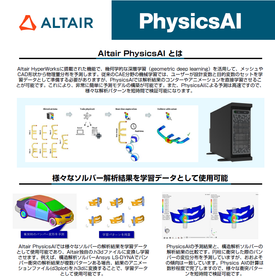Introducing the advantages and disadvantages of 3D construction using X-ray CT and FIB slice cross-sections, as well as the 3D construction method using mechanical polishing!
We will introduce a case study of a 3D construction method using mechanical polishing. Ceramic capacitors have a structure where thin film electrodes are stacked internally, and X-ray CT cannot confirm the internal electrodes as they appear transparent. Additionally, 3D construction using FIB slice cross-sections is limited to localized confirmation due to the sample being only a few millimeters thick. The 3D construction method using mechanical polishing can complement the areas where X-ray CT and FIB slice cross-sections are not effective, allowing for 3D construction in some cases. [Case Study of 3D Construction of Ceramic Capacitors Using Mechanical Polishing] ■ X-ray CT image: Internal electrodes cannot be confirmed ■ 3D construction using FIB slice cross-sections: Limited to localized confirmation ■ 3D construction using mechanical polishing: Internal electrodes can be confirmed, allowing for extensive 3D observation *For more details, please refer to the PDF document or feel free to contact us.
Inquire About This Product
basic information
**Advantages and Disadvantages of 3D Construction Using X-ray CT and FIB Slice Sections (Excerpt)** ■ X-ray CT - Method: The sample is rotated to obtain continuous 360-degree images, constructing a 3D image. - Advantages: Enables non-destructive 3D imaging. - Disadvantages: Not suitable for imaging heavy metals or thick samples as X-rays cannot penetrate them. ■ FIB Slice 3D - Method: Multiple cross-sections are created using FIB slicing, and images are obtained each time. - Advantages: Images can be magnified up to tens of thousands of times, allowing for sub-micron order 3D imaging. - Disadvantages: Not non-destructive due to the FIB processing. *For more details, please refer to the PDF document or feel free to contact us.*
Price range
Delivery Time
Applications/Examples of results
For more details, please refer to the PDF document or feel free to contact us.
catalog(9)
Download All CatalogsCompany information
Aites was established in 1993, originating from the quality assurance department of the IBM Japan Yasu office. Based on the technical expertise cultivated through cutting-edge defect analysis and reliability assurance of electronic components at the IBM Japan Yasu office, we have provided various products and services that support the development and manufacturing of semiconductors, displays, organic EL, solar cells, and electronic components to customers both domestically and internationally.







![[Case Study] X-ray Fluoroscopy and CT Examination Equipment](https://image.mono.ipros.com/public/catalog/image/01/779/511806/IPROS69821420652988785136.jpeg?w=120&h=170)




![[Video] Slice & View/3D Construction of Plating Defects by FIB](https://image.mono.ipros.com/public/product/image/b79/2001077557/IPROS02885934789281006658.png?w=280&h=280)







